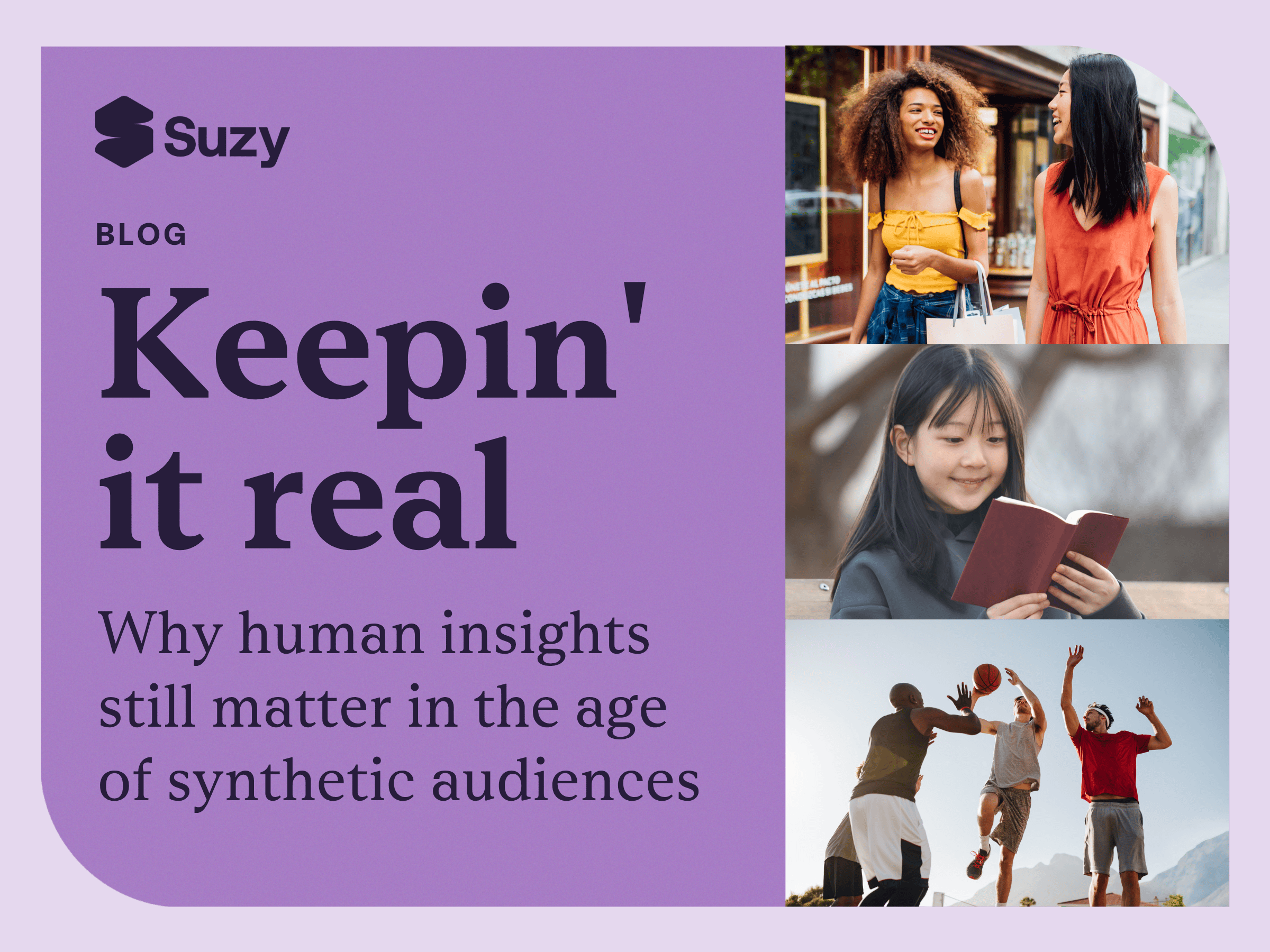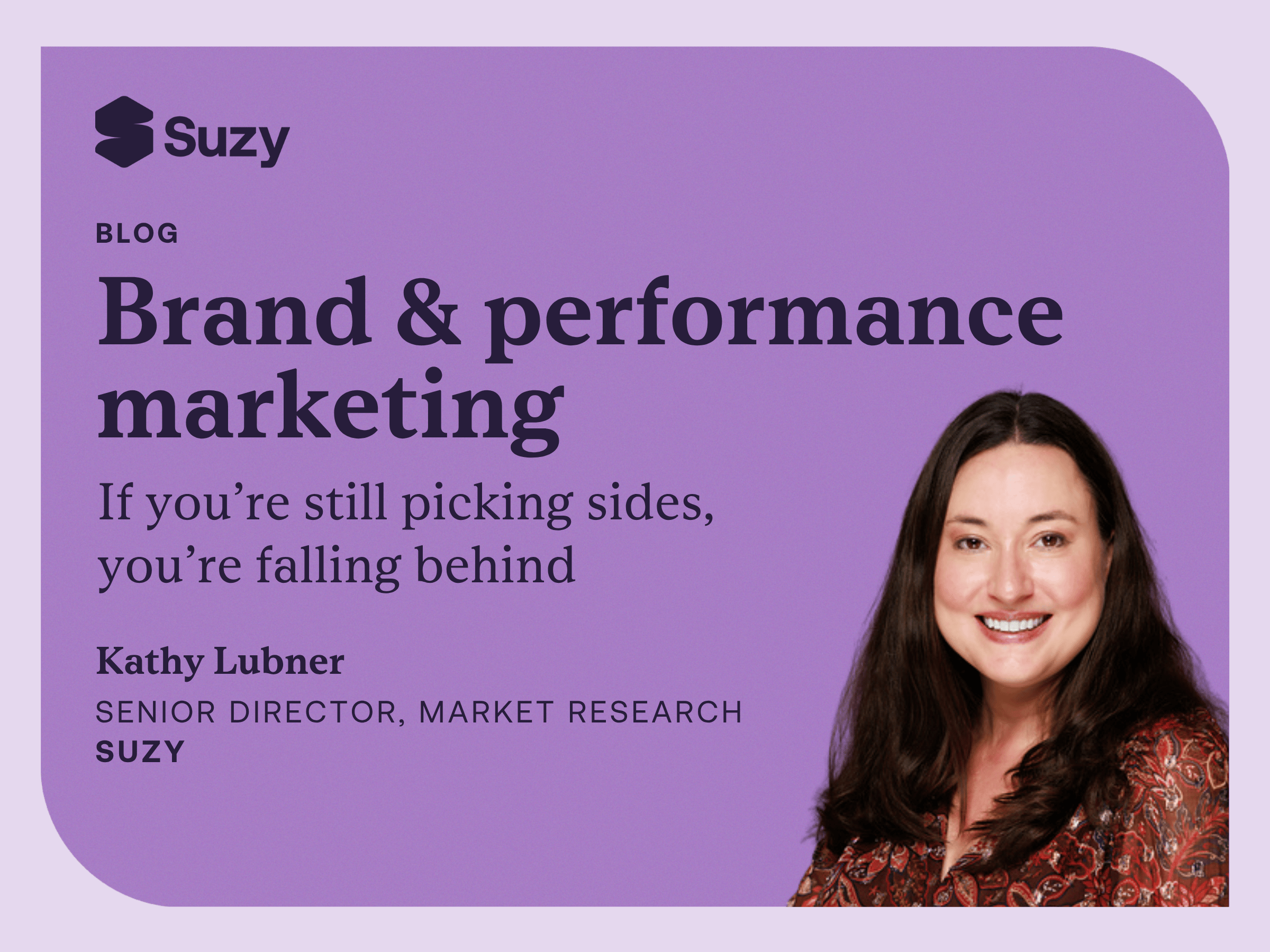Plastic: It’s floating in the ocean, piling up in landfills, and even making its way to the human bloodstream. While plastic pollution has long been a concern, the rapid acceleration of climate change means that sustainability is quickly becoming a priority for Americans. So, what can be done to solve the plastic problem? Reusable CPG packaging and refillable products may be one part of the solution.
In a recent Suzy survey, the number one thing consumers wanted personal care brands to do to be more sustainable was to offer a refill program for products. Consumers are putting their money where their mouth is. 44% of survey respondents said they try to use reusable products and packaging instead of single-use plastic to be more sustainable, while 49% of consumers said they prioritized reusable/refillable packaging when they shopped. But another 33% said reusable packaging and refillable products weren’t available in their community.
Reusable packaging is a huge opportunity for brands. According to ReportLinker, the global reusable packaging market will likely jump from $78.4 billion in 2020 to $112.3 billion by 2027.
Some brands are already leaning in, especially in places like Europe, Mexico, Canada, and coastal cities in the US. Unilever has launched refill pilot programs where consumers can refill products at home and in-store. Others, like Clorox, are partnering with Loop, the TerraCycle offshoot that distributes brand-name products in reusable packaging. Even beauty brands are getting into the game, with Hermès’ refillable lipsticks and Hourglass’ eyeshadow singles.
Care about sustainability? Catch up on the latest consumer insights and attitudes on going green by downloading Suzy’s latest whitepaper: Sustainability is Everyone’s Business: Consumer Insights on Six Leading Industries
So, how do reusable packaging and refillable products work? What types of products are consumers most likely to purchase refills for? And what are the challenges brands might face trying to implement such a program? Let’s explore.
How a Refill Program Works
Step 1: The Reusable CPG Packaging
The first step to creating a refill program is developing reusable packaging. Unlike single-use plastic, the container needs to be durable so it can be refilled over and over again. Aluminum, glass, and even sturdier plastics all work well for reusable packaging.
The goal here is to make a container that will last much longer than traditional CPG packaging so the consumer doesn’t have to throw it out after a few months or even a few years. Otherwise, this packaging could be even worse for the environment and take much longer to break down. This is known as a payback period. Sometimes, reusable packaging may not actually be more eco-friendly than regular materials.
Step 2: The Product Refill
The next step is creating the product refills. Some innovative brands offer powders, tablets, or concentrates that consumers can add to water to create a full-size refill. Refillable products can also come in pods or cartridges. Still, other brands offer refill stations, where a consumer can come in-store to refill a bottle or container. Sometimes, refills come in plastic packaging that is less resource-intensive or is at least recyclable, resulting in less waste in the long run.
Step 3: The Refill Process
From a direct-to-consumer refill program to offering refill stations in-store, there are a lot of options to help your consumers restock. It ultimately will depend on the type of reusable packaging you choose and the form your product refill comes in. Consumers can order refills directly. Or, they may pick up containers in-store, then return them to a drop-off bin. Some programs rely entirely on shipping, so the consumer will have to return packaging through the mail. Still, others may need to visit the store to top off their container.
Examples of reusable packing and refillable products
To better illustrate how reusable packaging and refills work, let’s look at a few key examples in the CPG insights.
Loop
Perhaps the most well-known example of a refill program, Loop is bringing reusable packaging to many of the most popular brands, like Procter & Gamble, Nestlé, PepsiCo, Unilever, Mars, Clorox, Coca-Cola, Mondelēz, Danone, and many others.
Loop’s partnerships allow consumers to shop in-store for the brands that they like. The products are stocked on-shelf in reusable containers and can be purchased as usual. One thing to note: shoppers must grab a return bag and pay a small, refundable deposit for the packaging. Return bags can be dropped off at the same store in a collection bin, and then will be sent back to Loop for cleaning and refilling.
In this system, consumers can buy Gerber, Cascade, and Kroger’s Simple Truth brand. Loop is also developing a relationship with Burger King that allows consumers to grab a Whopper and drink in reusable packaging.
Myro
Body care company Myro offers refillable body wash and deodorant products. Their reusable bottles and cases are made of solid, sturdy plastic built to last. Myro offers their refills in a couple of ways. Body wash comes in concentrate form, packaged in a recyclable tube. All consumers need to do is add water and give their bottle a shake. Their deodorant refills come as a cartridge, and consumers can simply pop it into their case to start using. Like many DTC brands, they offer a subscription model so consumers can get their refills on a regular schedule.
Blueland
With their reusable bottles and refill tablets, Blueland claims to have helped eliminate over a billion single-use plastic bottles from landfills. The DTC brand offers cleaning products for the home, including laundry detergent, hand soap, and dish soap. All consumers have to do to refill their products is drop a refill tablet in their glass bottle and add water.
The Body Shop
After a successful pilot program, The Body Shop plans to introduce refill stations to hundreds of stores globally. First, consumers purchase a reusable aluminum bottle from their store. That bottle can be filled up with hair care products, shower gel, or hand wash. After they’ve used up their product, consumers can wash out their bottle and bring it back for a refill.
The system is surprisingly cost-effective. Buying a reusable bottle plus product costs about the same as a traditionally packaged product. But every refill after that is a little less expensive, ultimately adding up to cost savings for The Body Shop’s customers.
Trestique
Beauty brand Trestique offers refillable makeup products, including lipsticks, foundation, and eyeshadows. As with all reusable CPG packing, the product is a little more expensive upfront. However, the refills are typically cheaper than buying the entire product all over again. All of Trestique’s products come in stick form, and users can easily pop in a new cartridge of their favorite products. While the program doesn’t entirely eliminate plastics, the cartridges are recyclable through Pact.
Dior
Luxury beauty, fragrance, and skincare products are also refillable now thanks to prestige brand Dior. The Rouge Dior lipstick refill comes in 75 shades, allowing consumers to swap up their lip color. The brand’s Sauvage Eau de Toilette fragrance makes it easy to refill fragrance bottles too. Their auto-stop system prevents overfilling, so users can get the most out of their refill. Finally, fans of Dior can buy refills for the L’Or De Vie Crème and Sérums.
What do consumers think about reusable CPG packaging and refills?
Consumers are definitely interested in the reusable packaging model and 84% of survey respondents were willing to swap their current personal care products for ones that are more sustainable. This is especially true for products like shampoo, conditioner, body wash, and body lotion.
They were less interested in buying reusable packaging for products like cosmetics, skincare, and sunscreen. 31% of Consumers did worry about the cleanliness of reusable packaging, which could explain their reluctance to use refillable facial products. Only 15% of the respondents said that they wouldn’t buy any products with reusable packaging.
As far as household products, consumers were most interested in reusable packaging for laundry detergent, dish soap, and hand soap. Most were also open to using household cleaners in reusable packaging, like all-purpose and glass cleaners. Only 11% weren’t interested in buying household products with reusable packing.
When it came to food and beverages, 60% of consumers were willing to buy pantry basics in reusable packaging, like pasta, legumes, and cereal. But enthusiasm was nearly as high for baking essentials (57%) and snacking items (57%), like chips and cookies. Over half of the respondents (54%) were willing to buy condiments and beverages in reusable containers. The only items that gave consumers any pause were frozen items, like ice cream or frozen fruit.
What challenges are there with reusable CPG packaging?
The first challenge that brands might face with reusable packaging is cost. Consumers believed that reusable packing is “too expensive”. High-quality packaging adds up. And if the process requires shipping, or returning items for a refill, there’s usually a deposit needed too. The best way brands can ease consumer anxieties around the more expensive up-front costs is to talk about long-term savings.
Next, brands will need to educate customers about the process. Reusable packaging and getting refills can be inconvenient for consumers compared to traditional packaging. After all, it’s a lot easier to go pick up prefilled, prepackaged CPG products in plastic than to wash a reusable bottle and then restock. If a consumer only uses their new reusable packaging a few times before deciding to throw it away, it could be more harmful to the environment than traditional plastic packaging. Using traditional loyalty methods may help retain customers and ensure the longevity of their reusable packaging.
Finally, access remains an issue. 33% of surveyed consumers said that refill programs weren’t available in their communities. Indeed, in much of the research for this article, refill programs took place outside of the USUnited States or in coastal American cities, including many of Loop’s offerings and the Body Shop’s refill stations. There weren't many options for Americans in the Midwest, though 52% of people living there wanted refill stations from brands. As demand across the country grows, brands will need to step in with accessible and refillable offerings.
Final Words
While the desire to buy reusable CPG packaging is there, it’s not always an option for consumers based on price, process, and location. Brands that can deliver reusable and refillable packaging can take advantage of a big opportunity to meet consumer needs and make sustainability a priority.
Learn more about sustainability by downloading Suzy’s new whitepaper. In it, you’ll discover:
- How consumers really feel about living green
- What consumers want brands to say and do when it comes to sustainability
- Where consumers prioritize sustainability in their shopping behaviors, and how much they're willing to spend on eco-friendly products
- And much more!
.webp)







.png)